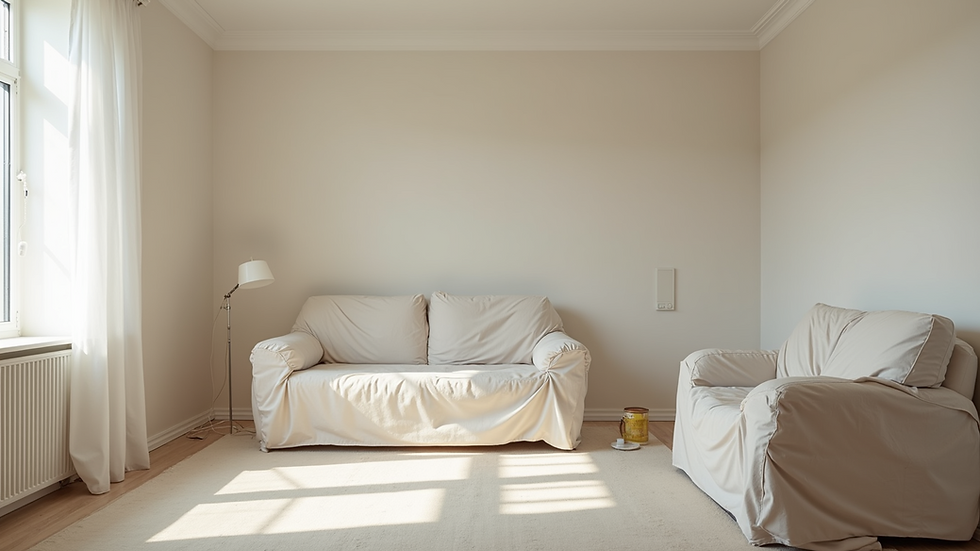Common Signs of a Poor Interior Paint Job
- Oct 11, 2023
- 3 min read
Updated: Apr 10

Painting any room should always be thought of as a big responsibility and when you hire a professional to do the job, you have every right to expect results that are both beautiful and long-lasting.
Sadly and frustratingly, that isn’t always what you get…
There are so called ‘professionals’ in our trade who are anything but professional, leaving you with a bad interior paint job that is streaky, fading and cracking.
As a professional who takes genuine pride in his reputation, I come across poor workmanship from time to time. Warning clients to check any other work these less honest tradesmen have undertaken in their properties is a horrible thing to have to do, but it is important to spot the signs to know when to make a complaint and warn others.
Warning signs of a poor interior painter
You might see videos online of painters covering a wall in minutes, don’t be fooled. They simply haven’t shown you the hours of preparation it takes beforehand.
Preparation is everything!
Wall preparation
For the best possible finish, walls must be clean and any damage dealt with beforehand, even minor imperfections such as dents and small cracks. Old paint must be taken off when necessary and any gloss surfaces must be sanded back to provide a key for the new paint.
Walls should also be cleaned and rinsed as a final step.
A true professional painter carries much more than a tin of paint and a brush. They should carry a range of professional brushes, high quality caulk and a selection of rollers, a safe ladder system and any other professional supplies the project will need.
That includes painter’s tape, which is usually blue or green, if you spot basic masking tape that can be an early warning sign of a sub standard painter…
Room preparation
Preparing the working space is just as important as prepping the painting surface. We know by experience what might need to be moved due to the risk of paint spots and safe access and we may ask you to move these things beforehand.
What a good painter will do however, is carry a supply of cloth and plastic dust sheets to cover expensive furniture, as well as covering windows, floors and removing light fixtures.
Paint spots on light shades, streaks of paint on window frames and lines that are not clean and laser straight are all signs of a poor interior paint job.
The right paint for the job
A consultation around colours is an important part of a professional painter’s role; we can help with advice for colours and finishes for individual rooms and share our experience if a client is unsure.
In addition to the right colours, the right primers are just as important, to fix minor imperfections in the wall, ensure the paint is applied smoothly and evenly and lasts many years longer than it otherwise might.
Multiple coats of paint might also be needed, to ensure colours are vibrant and any surface colours beneath do not show through. Individual coats must also be given time to dry before applying another coat and the factors that affect these drying times can vary from the weather outside to the types of paint being used.
Work with a trusted professional
As you can see, there is a lot to look out for, but the signs are there if you know where to look!
If you’d like to learn more or get a free quote or consultation from a professional painting service, get in touch. I’d love to hear from you.





Comments